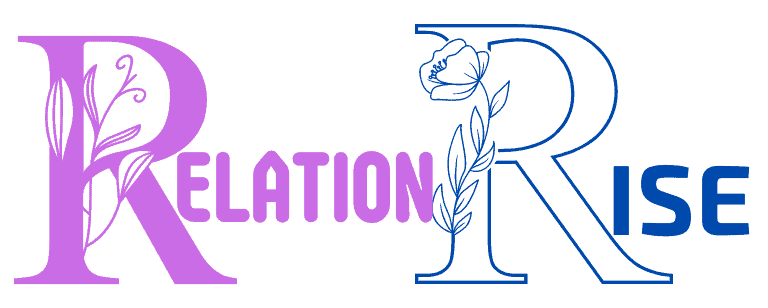What Does Stagnant Mean in a Relationship
Stagnant in a relationship means no growth or progress. It’s a state of lack of development and change, often leading to feelings of boredom and dissatisfaction.
When a relationship becomes stagnant, it can lead to routine and predictability, causing a lack of excitement and passion. This can result in a feeling of being stuck and can lead to issues if not addressed. It’s important to recognize signs of stagnation and take steps to revitalize the relationship to ensure long-term happiness and fulfillment.
Understanding the causes and effects of stagnation is essential for fostering a healthy and thriving connection with your partner. By addressing the issue and implementing positive changes, a stagnant relationship can be revitalized and brought back to life.
Understanding Stagnation In Relationships
Defining Stagnation In The Context Of Relationships
In relationships, stagnation refers to a lack of growth or progress. It occurs when a couple’s dynamic becomes static, and the relationship no longer evolves or improves. Stagnant relationships can lead to feelings of dissatisfaction, boredom, and a sense of being stuck in a rut.
Challenges Arising From Stagnant Relationships
Stagnant relationships may give rise to a variety of challenges, including:
- Communication breakdown
- Loss of intimacy
- Diminished emotional connection
- Reduced mutual respect
These challenges can contribute to feelings of disillusionment and may impact the overall well-being of the individuals involved.
Strategies To Overcome Stagnation
Overcoming stagnation in relationships requires intentional effort and commitment from both parties. Key strategies to revitalize a stagnant relationship include:
- Open and honest communication
- Rekindling romance and intimacy
- Setting mutual goals and aspirations
- Seeking professional counseling or therapy
Signs Of A Stagnant Relationship
Recognizing the signs of stagnation is crucial for taking corrective action. These may include:
- Repetitive arguments or conflicts
- Lack of excitement or enthusiasm
- Living parallel lives without interdependence
- Resentment or indifference towards each other
Signs Of Stagnant Relationship
In a relationship, stagnation can manifest in various ways, signaling the need for introspection and potential action. Recognizing the signs of a stagnant relationship can help partners to address the issues and revive the connection before it’s too late.
Lack Of Growth And Development
One clear sign of a stagnant relationship is the lack of growth and development, both individually and as a couple. When partners no longer challenge each other, share new experiences, or support each other’s personal growth, the relationship can become stagnant. Boredom and a feeling of being stuck in a rut often accompany this lack of growth and can lead to a sense of discontent and dissatisfaction.
routine And Predictable Interactions
Another indication of stagnation is the presence of routine and predictable interactions within the relationship. Conversations become repetitive, activities follow a monotonous pattern, and spontaneity is replaced with predictable behavior. This lack of excitement and novelty can contribute to a sense of emotionally disconnected and unfulfilled partnership.
Impact Of Stagnancy
Stagnancy in a relationship can have profound effects on both partners, impacting various aspects of their emotional and communicative dynamics.
Emotional Detachment And Disconnection
Emotional detachment can set in when a relationship becomes stagnant. Over time, the lack of growth and excitement can lead to partners feeling disconnected from each other emotionally. This can manifest in a gradual decline in affection, intimacy, and overall emotional bond. The once vibrant and intimate connection may give way to feelings of emptiness and apathy, causing significant emotional distress for both parties.
Communication Breakdown And Unresolved Conflicts
Communication breakdown is a common consequence of stagnancy in a relationship. As the excitement wanes, partners may find it increasingly difficult to communicate effectively. This breakdown can lead to unresolved conflicts, as issues are left unaddressed, creating a detrimental cycle of tension and frustration. The inability to engage in open and honest communication hampers the resolution of disputes and impedes the growth of the relationship.
Overcoming Stagnation
Overcoming stagnation in a relationship is crucial for maintaining a healthy and fulfilling partnership. When a relationship feels stagnant, it can create a sense of dissatisfaction and detachment. The good news is that there are practical steps that can be taken to breathe new life into a relationship and to overcome the feeling of stagnation.
Embracing Change And New Experiences
In order to overcome stagnation in a relationship, embracing change and seeking out new experiences together can be incredibly beneficial. Trying new activities, exploring new places, and welcoming change can inject a sense of vitality and excitement into a relationship that may have become monotonous or routine. Whether it’s trying a new hobby together or embarking on an adventure, exploring new experiences can refresh the relationship dynamic.
Nurturing Individual Growth Within The Relationship
It’s also essential to focus on nurturing individual growth within the relationship. Supporting each other’s personal development and encouraging individual passions and pursuits can help breathe new life into the partnership. When both partners are actively growing and evolving, it can positively impact the relationship as a whole.
Seeking Professional Help
When a relationship becomes stagnant, seeking professional help can be the key to overcoming the roadblocks and revitalizing the connection between partners. Below are some effective strategies to address stagnation and nurture a flourishing relationship.
Counseling And Therapy To Address Stagnation
Professional counseling and therapy offer a supportive environment for couples to explore their challenges, communicate effectively, and gain valuable insights into the underlying issues contributing to relationship stagnation. Through guided sessions, both partners can address their individual concerns and work towards mutual understanding and growth.
Reconnecting And Rebuilding A Thriving Relationship
Reconnecting with your partner and rebuilding a thriving relationship is essential in overcoming stagnation. This involves open and honest communication, spending quality time together, and actively engaging in activities that reignite the spark. By fostering trust, intimacy, and mutual respect, couples can create a solid foundation for a fulfilling and dynamic partnership.
Frequently Asked Questions On What Does Stagnant Mean In A Relationship
What Are The Signs Of A Stagnant Relationship?
Feeling stuck, lack of growth, boredom, and routine may indicate a stagnant relationship.
How Can You Tell If Your Relationship Is Stagnant?
Look for decreased communication, less intimacy, and lack of excitement in daily life.
What Causes A Relationship To Become Stagnant?
Monotony, lack of effort, unresolved issues, and neglect of individual needs can lead to stagnation.
How Can You Revive A Stagnant Relationship?
Open communication, trying new activities, seeking professional help, and prioritizing the relationship can help.
Why Is It Important To Address Stagnant Relationships?
Ignoring stagnation can lead to resentment, detachment, and ultimately the end of the relationship. Addressing it can lead to growth and fulfillment.
Conclusion
Understanding the meaning of stagnation in a relationship is crucial for its growth. Recognizing the signs of stagnancy and addressing them with open communication and effort can help revive the relationship. It’s important to remember that every relationship goes through ups and downs, and it’s the willingness to work through them that makes all the difference.



